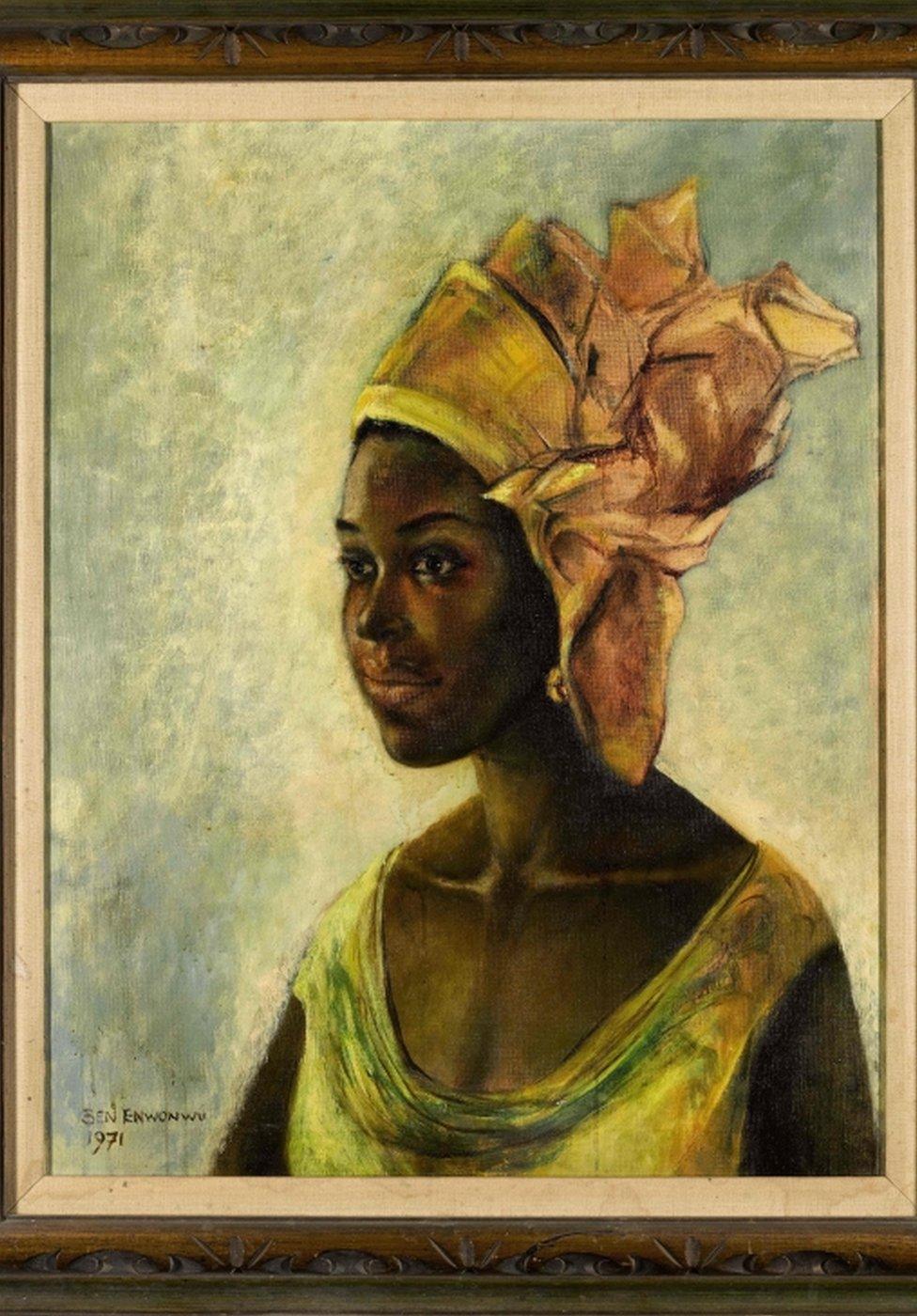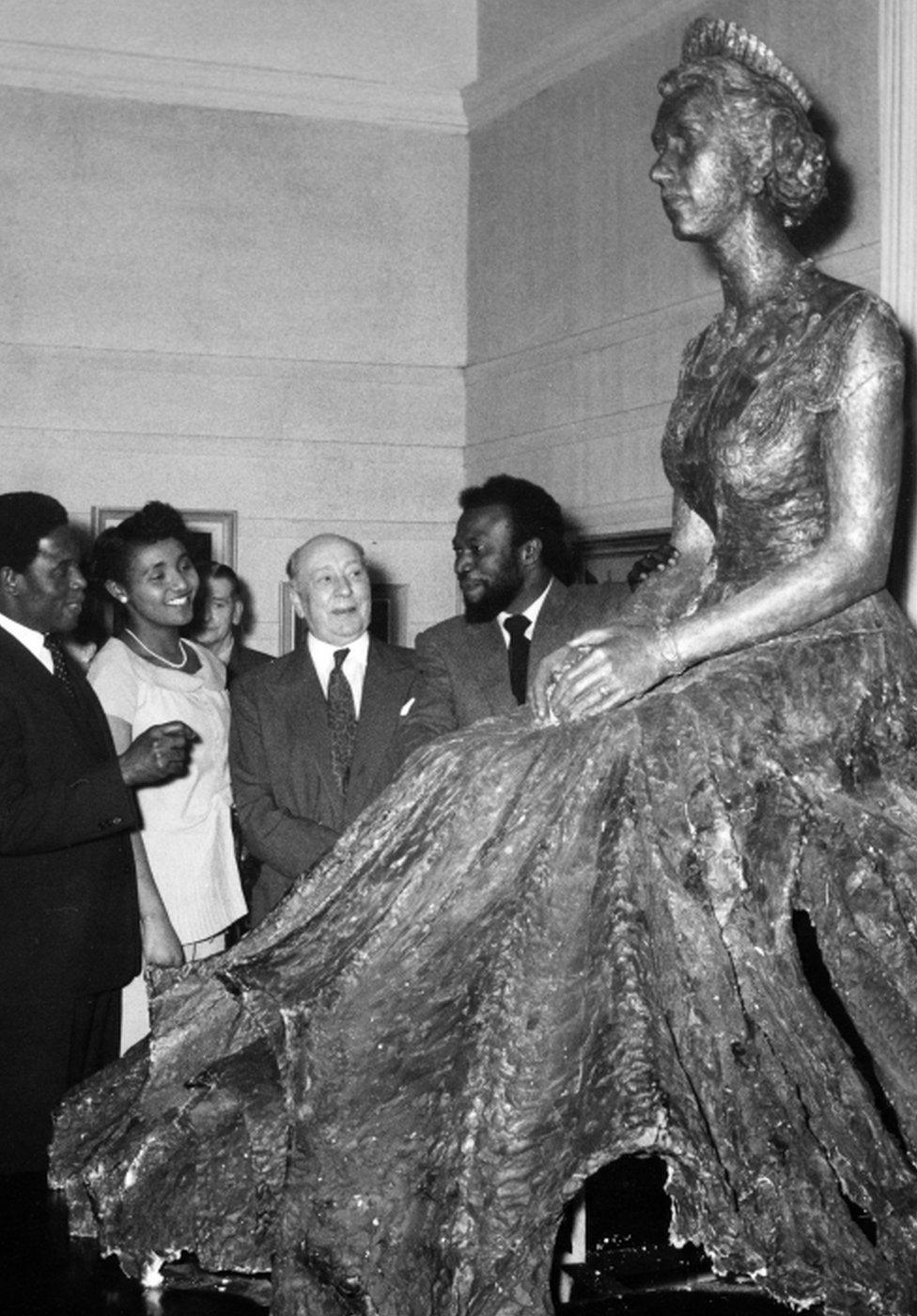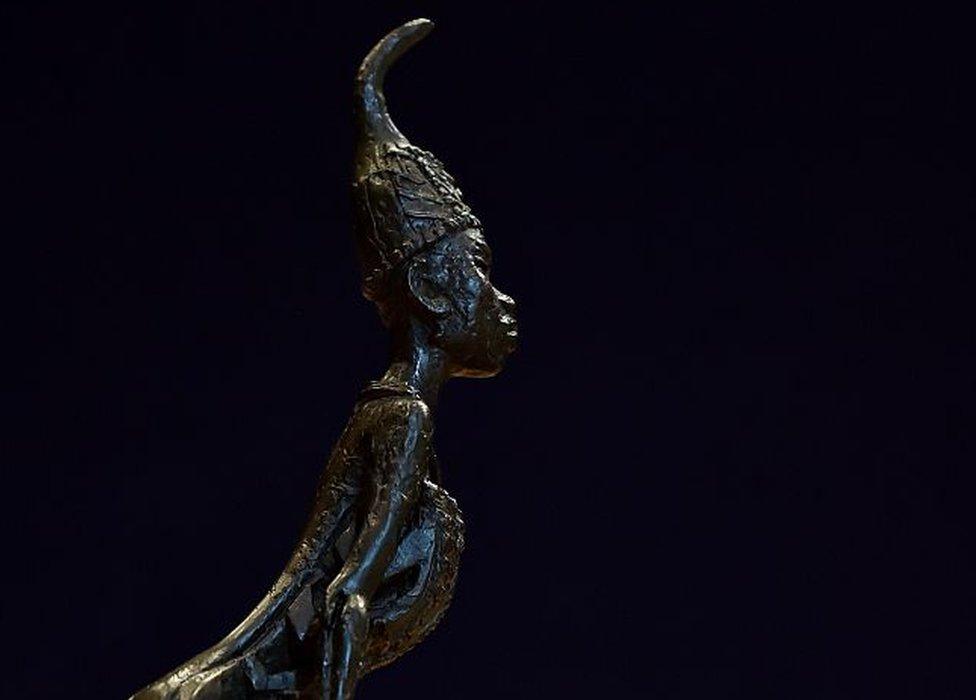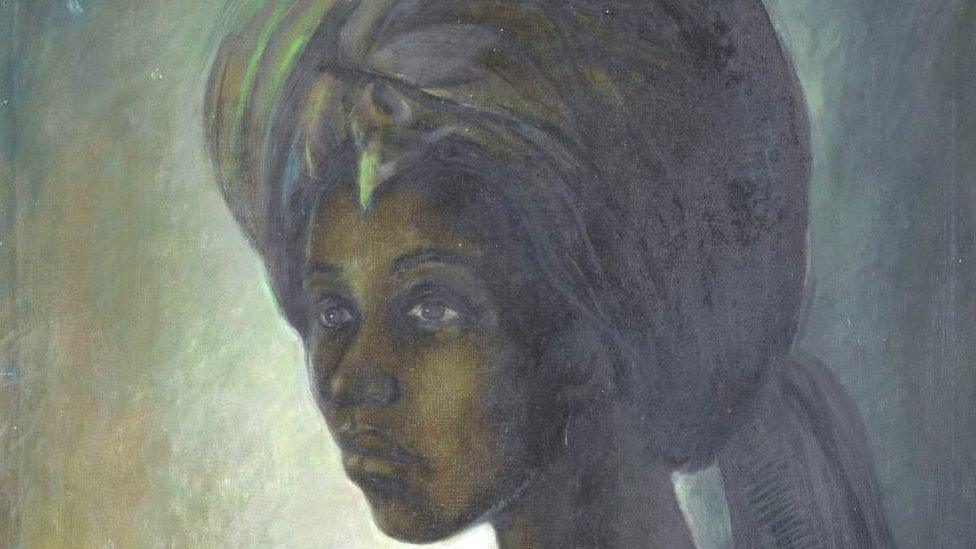Ben Enwonwu: The Nigerian painter behind 'Africa's Mona Lisa'
- Published

The painting of Christine Davis, completed in 1971, is the second most expensive Ben Enwonwu painting in the world
A painting by the late Nigerian master painter and sculptor Ben Enwonwu this week sold for £1.1m ($1.4m) at an auction in the British capital, London.
The painting, simply titled "Christine", is of Christine Davis, an American hairstylist who moved to Lagos with her British husband and struck up a friendship with the painter. "Christine" was completed in 1971.
Another work by Enwonwu, of an Ife princess Tutu, affectionately dubbed "Africa's Mona Lisa", was sold in 2018 for £1.2m. It is considered a national masterpiece.
Celebrated Nigerian author Chimamanda Ngozi Adichie told the BBC in 2013: "This particular painting "Tutu," the print, hung on every wall, of every middle-class family in eastern Nigeria when I was growing up."
"Africa's Mona Lida" - Ben Enwonwu's masterpiece "Tutu" was lost for more than 40 years
So who was Ben Enwonwu?
Born in 1917 in Onitsha in Nigeria to a sculptor father and a successful merchant mother, Enwonwu had a gift for the arts from a young age.
At the age of 17, he enrolled at Government College, Ibadan, where he studied fine art under the supervision of art tutor Kenneth C Murray. Two years later, he received a scholarship to study at the Slade School of Fine Art at the University of London, UK.
Enwonwu also studied at Goldsmiths and Oxford and later completed postgraduate work in social anthropology at the London School of Economics.
His decision to study anthropology was partly fuelled by his encounters with racism in London.
'Africanising' the Queen
The Ben Enwonwu Foundation, founded by Enwonwu's son Oliver, says this about the late master: "He is credited with inventing a Nigerian national aesthetic by fusing indigenous traditions with Western techniques and modes of representation."
In 1956, the young artist was commissioned to do an official portrait of Queen Elizabeth II, becoming the first African artist ever to produce an official portrait of any European monarch.
Enwonwu took creative liberty with the Queen's lips and made them fuller, creating controversy in the British art world.
Although the Queen publicly endorsed the sculpture, Enwonwu was criticised in some quarters for "Africanising" the Queen.

Ben Enwonwu (right) unveiled his portrait statue of Queen Elizabeth at the Royal Society of British Artists in 1957

Creating a sculpture of the Queen was a great opportunity and Enwonwu naturally stood to gain professionally, but there were many who viewed him as "seeking validation from colonial masters" at a time when Nigeria was on the brink of independence, according to Professor Nkiru Nzegwu.
Race and colonialism
Enwonwu's relationship with the Western world was complicated. As arguably the most decorated African artist in the 1950s and 1960s, he benefitted directly from his close ties to the Western art world.
But as an African, he felt undervalued.
"I will not accept inferior position in the art world. Nor have my art called 'African' because I have not correctly and properly given expression to my reality," he said in an interview with the BBC in 1958.
Two years earlier, he gave a passionate speech to the First International Conference of Negro Writers and Artists in Paris, in which he talked about race, pan-Africanism and colonialism.
"I know that when a country is suppressed by another politically, the native traditions of the art of the suppressed begin to die out. Then the artists also begin to lose their individual and the values of their own artistic idiom. Art, under this situation, is doomed," he said in the speech.

Many of Enwonwu's work celebrate blackness
London-based curator Bea Gassmann De Sousa writes , externalthat Enwonwu saw colonialism as a force that "limits or impedes artistic creativity".
Enwonwu supported the Negritude movement - an anti-colonial cultural and political movement founded by a group of African and Caribbean students in Paris in the 1930s - and created a series of paintings and sculptures of the same name, celebrating Africa and blackness.

Ben Enwonwu was also a celebrated sculptor
"While Europe can be proud to possess some of the very best sculptures from Africa among museums and private collectors, Africa can only be given the poorest examples of English Art particularly, and the second-rate of other works of art from Europe," he said in his speech in 1956. His speech was later published in Présence Africaine, a Paris-based pan-African quarterly magazine.
Enwonwu died in Lagos, Nigeria in 1994, aged 77. Unlike many great artists, he managed to acquire success and fame in his lifetime.
His work has undoubtedly influenced many contemporary African artists. Enwonwu's dream of a world where African art was celebrated still lives on, and with the recent surge of international interest in contemporary African art, it is closer than ever.
- Published28 February 2018
